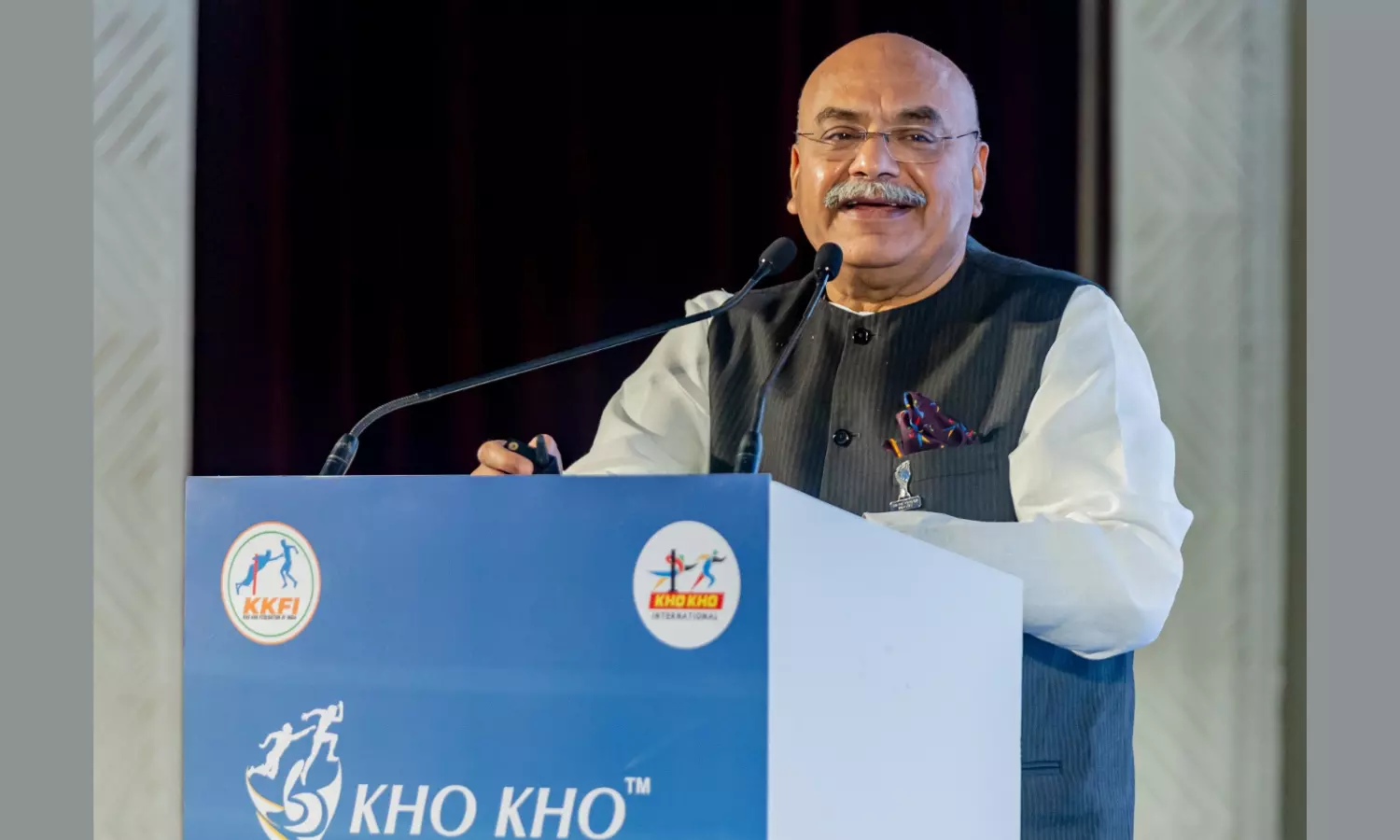KKFI President Reveals Road Map to Boost Kho - Kho
Kho-Kho, with its deep cultural roots and fast-paced dynamics, deserved a place on the global sporting map, Sudhanshu Mittal, President of Kho Kho Federation of India said

Sudhanshu Mittal (Photo by arrangement)
In a latest and exclusive conversation with Deccan Chronicle, Sudhanshu Mittal, President of Kho Kho Federation of India (KKFI) opened up on putting Kho - Kho on the global map and his future road map for further boosting the sport.
Here are excerpts:
You’ve been at the forefront of taking Kho-Kho global. What inspired you to champion this indigenous sport on the international stage?
I have always believed that every nation must actively promote its indigenous sports. When I stepped into the world of sports administration, I had a choice—either align myself with an already popular sport or dedicate my efforts to uplifting a traditional Indian game. I chose the latter. Kho-Kho, with its deep cultural roots and fast-paced dynamics, deserved a place on the global sporting map. My vision has always been to see Kho- Kho represented at prestigious platforms like the Olympics, Asian Games, and Commonwealth Games. That dream continues to drive everything I do in this space.
At WAVES 2025, you mentioned Kho-Kho is now played in 55 countries. Can you walk us through the strategy and partnerships that made this global expansion possible?
Yes, reaching 55 countries is a major milestone, and we’re hopeful of touching 90 by the end of this year. A pivotal moment came just before the COVID lockdown, when we hosted a coaching camp in Delhi that saw participation from around 40 countries. When the lockdown hit, many of these coaches were stranded here for nine months. That unforeseen situation turned into a blessing—they were immersed in Kho-Kho during that period, training rigorously and developing a passion for the game. When they returned to their home countries, they became ambassadors for Kho-Kho, establishing federations and spreading the game across continents.
What’s your vision for Kho-Kho over the next five years? How do you plan to scale the sport to 90+ countries?
Our primary goal is to have Kho-Kho featured in the 2032 Olympics, 2030 Asian Games, and the Commonwealth Games. We’ve already achieved recognition from the Olympic Council of Asia, which has opened the door to the Asian Games. This year, we expect to host the Commonwealth Kho-Kho Championship under the Commonwealth Games Federation. The groundwork is already laid—we are expanding our network of national federations, supporting infrastructure development, and introducing standardised formats to ensure the sport is embraced at a global level.
How do you view the transformation of Kho-Kho from a grassroots sport to an emerging global phenomenon?
Kho-Kho has come a long way—from being played barefoot on mud to being performed on custom-engineered mats in front of global audiences. This transformation is symbolic of India’s larger journey in reclaiming and reinventing its traditional games. Kho-Kho today is not just a nostalgic pastime—it’s an internationally competitive, professionally managed sport that emphasizes speed, stamina, agility, and strategy. The recent World Cup was a turning point, establishing Kho-Kho’s credibility on the global stage.
What challenges have you faced in modernizing a traditional game while preserving its cultural essence?
One of the biggest challenges has been managing resistance from purists who were understandably concerned about changes. But we took a calculated approach. We introduced mats after extensive R&D to ensure safety and speed, revised rules to make the game more spectator-friendly, reduced team sizes, and introduced innovations like the "Wazir" and DRS (Decision Review System). We promised stakeholders that if the new format didn’t work, we would return to the old one. But the overwhelming success of the World Cup proved that modernization and tradition can coexist harmoniously.
In what ways have technology and media played a role in rebranding Kho-Kho for modern audiences—both in India and globally?
Technology has been a game-changer. We developed a comprehensive Games Management System (GMS) app that handled everything—from live streaming and match updates to logistics and emergency support. We even created an e-sports version of Kho-Kho. Additionally, our partnerships with broadcasters like Star Sports gave the game global visibility. We ensured that participants from every country were taken care of—including catering to their cultural dietary needs—setting a new benchmark in tournament hosting.
Platforms like Khelo India and Ultimate Kho Kho are creating new opportunities. How have they helped rural talent find professional sporting pathways?
These platforms have given players visibility, pride, and purpose. Over 3,000 Kho-Kho players have secured government jobs through sports quotas—a transformative shift, especially for youth from humble backgrounds. Today, players who once practiced on dusty fields are signing autographs and featuring on national television. This professional ecosystem has inspired the next generation to dream big and treat Kho-Kho as a viable career path.
What more needs to be done at the grassroots level to nurture the next generation of Kho-Kho players?
We’ve adopted a top-down model to build prestige at the highest levels, which naturally trickles down. Currently, over 5 lakh school children are registered in our system. The next step is to roll out State and District Leagues that are aligned with schools, colleges, and local clubs. Mass participation is key—and that’s what we’re working towards through structured programs and competitions.
Is there a roadmap in place to integrate Kho-Kho into school and university curriculums across the country?
Absolutely. Our State and District Leagues are being designed to build direct partnerships with educational institutions. Once children see consistent tournaments and professional pathways, participation becomes organic. We’re also in dialogue with school boards and universities to formally include Kho-Kho in physical education curricula.
You’ve often spoken about cohesive support between the government and private sector. What are your key recommendations to strengthen this partnership for indigenous sports?
Indigenous sports often operate with limited resources, and for them to thrive globally, government support is essential. Indian embassies abroad must act as cultural and sporting ambassadors. CSR policies should be revised to allow companies to fund both domestic and international initiatives for traditional games. By aligning government intent with corporate energy, we can take indigenous sports like Kho-Kho to new heights.
As a political thinker, strategist, and philanthropist, how have your diverse experiences shaped your leadership in the world of sports?
My political and philanthropic experiences have taught me how to think strategically and build ecosystems. In politics, you learn to solve complex problems by building consensus and momentum—skills that are equally crucial in sports administration. In philanthropy, you learn empathy and the importance of impact. Together, they’ve helped me guide Kho- Kho through transformation with both purpose and vision.
What legacy do you hope to leave behind in India’s sporting history, especially through your work in indigenous games like Kho-Kho?
I hope to leave behind a legacy of belief—that our indigenous sports are not just relics of the past, but vibrant, competitive platforms of the future. If Kho-Kho becomes an Olympic sport and inspires millions of children to pursue it proudly, that would be the legacy I strive for. I want to prove that Indian heritage has global relevance—and that we have the ability to lead from the front.
( Source : Deccan Chronicle )
Next Story

